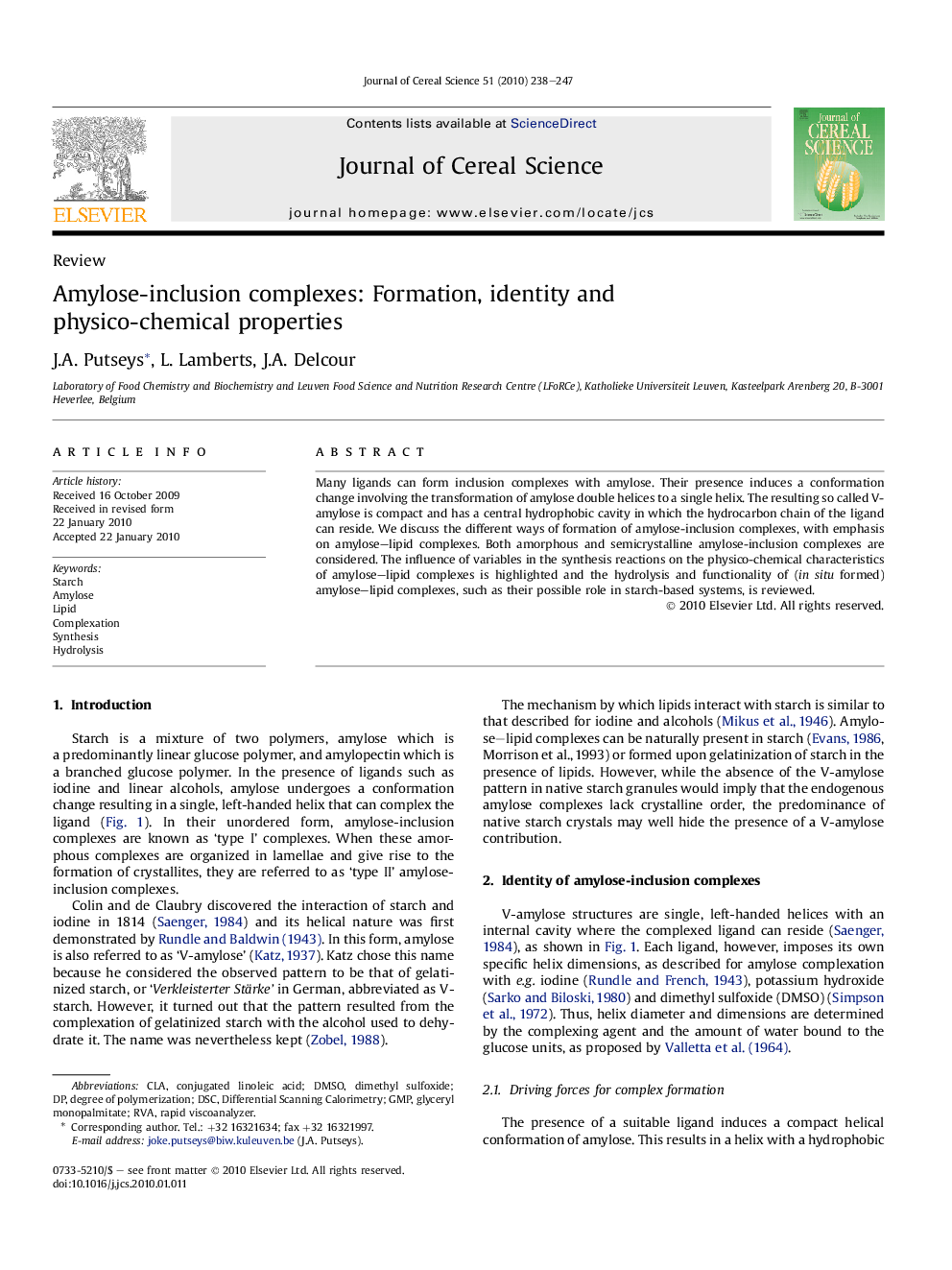| Article ID | Journal | Published Year | Pages | File Type |
|---|---|---|---|---|
| 4516202 | Journal of Cereal Science | 2010 | 10 Pages |
Many ligands can form inclusion complexes with amylose. Their presence induces a conformation change involving the transformation of amylose double helices to a single helix. The resulting so called V-amylose is compact and has a central hydrophobic cavity in which the hydrocarbon chain of the ligand can reside. We discuss the different ways of formation of amylose-inclusion complexes, with emphasis on amylose–lipid complexes. Both amorphous and semicrystalline amylose-inclusion complexes are considered. The influence of variables in the synthesis reactions on the physico-chemical characteristics of amylose–lipid complexes is highlighted and the hydrolysis and functionality of (in situ formed) amylose–lipid complexes, such as their possible role in starch-based systems, is reviewed.
